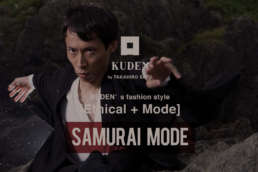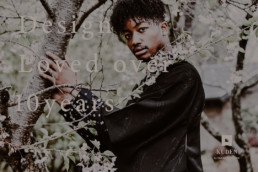Japan Italy Bridge interviews: Kenta Kambara and Nobuyuki Arai
We are back with another installment of our series "Japan Italy Bridge Interviews"! This time, we had the pleasure of interviewing the amazing Kenta Kambara, a wheelchair dancer from Japan, and Nobuyuki Arai, video director. These two collaborated with Gerbera Design's brand, KUDEN by TAKAHIRO SATO. The promotional video that they created together will soon be available online, but before that, let's hear about how it all began and what they thought of the experience.
JIB: To start, please introduce yourself.
K: My name is Kenta Kambara and I am a freelance wheelchair dancer who was born with a disability called spina bifida.
I work as a system engineer in my day job, and outside of that, I am a street performer and also an aerial acrobat and have performed at the closing ceremony of the 2016 Summer Paralympics in Rio de Janeiro.
A: My name is Nobuyuki Arai. After graduating from college as a photography major, I went to Germany and the Czech Republic to continue taking photos, and then began my work as a professional photographer in 2014. I’ve also been producing videos since 2017, and have also been working as a travel videographer since 2018.


JIB: Could you tell us about what led to your connection with KUDEN?
K: This all started was when an acquaintance of mine first told me that I’ve been invited to perform. Following that, I received a long and enthusiastic message from Mr. Sato, and it was his message that made the decision for me.
I was quite busy during that stretch of time, and it was also a period when I received many other offers to perform in videos too, so I was a little unsure. But his passionate message and him telling me that he could be flexible with the shooting schedule were what made me decide, “Yes, I’ll accept your offer.”
A: I was originally already acquainted with Mr. Kambara, the dancer and he asked if I would take part in this project as well. At the time, I have yet to come to know Mr. Sato, but he watched my videos on YouTube, and then asked to speak to me through Mr. Kambara. That was how it began for me.
JIB: Please tell us more about this collaboration that you’re doing with KUDEN now.
K: After accepting Mr. Sato’s offer, hearing about the brand concept from him, and receiving the storyboard from Mr. Arai, I began to think about my choreography as a dancer.
The Samurai Mode clothes were to be the stars of this video, so I wondered, “What movements would place emphasis on them?”. I thought of creating an atmosphere akin to swaying in the wind to bring out the unique characteristics of the clothes, like raising my arm and letting the wind blow against the sleeves. I wondered, what will come out of such movements that capture such an effect, or movements that are softer and lighter?
Adding to that, I combined those ideas with choreography and movements that I already have, and looked at the local topography while considering “how I would dance in this spot (chosen by Mr. Arai)”.
A: Like how it is with the Samurai Mode Jacket, Mr.Sato has a lot passionate beliefs and feelings, so I wondered, “Should create something that I personally really, really like?”
Of course, in the end, I did come up with something I personally liked, but I also pondered over what Mr. Sato was looking for. For example, right before the shoot, it’s sad but we heard that the sewing factory went bust, and I felt that it would be great if we could express that Mr. Sato’s emotions surrounding these clothes in the video. And, what was going to express those emotions was Mr. Kambara’s movements, so then I had to think about how I could magnify Mr. Kambara’s moves. For the shooting location, I chose a place that was wide and where nature’s textures came through strongly. From there, I took in ideas and created the final product.
The Samurai Mode Jacket, Mr.Kambara’s dance, Mr.Sato’s emotions; there were so many “idea elements” and combining them together created the video.
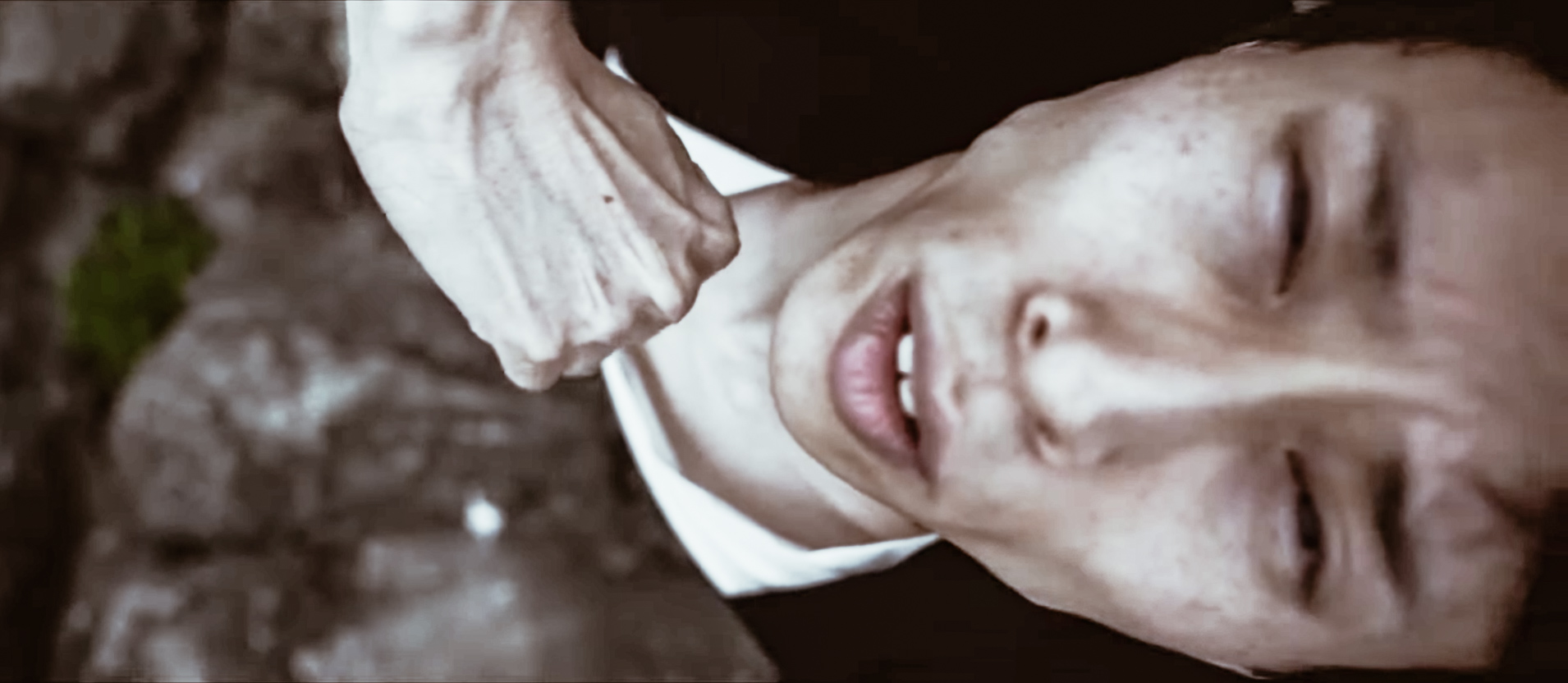

JIB: What made you want to work with KUDEN for this promotional video?
K: As I’ve mentioned, I was probably reading the personal message from Mr. Sato that made me decide that I wanted to do this. Because it really was a very long, very enthusiastic message (lol). And although what could be done isn’t much because of our schedule, I’m grateful that I was given the chance to work with such a passionate person after all.
A: Before the production of this video, I’ve actually had a few shoots with Mr. Kambara before. Mr. Sato have watched them but… they were simple shoots that were done at the time, and both Mr. Kambara and Mr. Sato spoke about wanting to do a proper shoot some day. So, when Mr. Kambara contacted me about this new project, I was more than happy to join in and be a part of it.
It was after that when I got to meet Mr. Sato, and while speaking to him, I could tell that he was a very passionate person with strong beliefs. To me, Mr. Sato is older than me and a mentor, but Mr. Sato said to me, “Use me (this project) to have fun”, which made me feel that as long as I was to produce a video with Mr. Kambara and Mr. Sato, I would honestly be able to create something interesting.

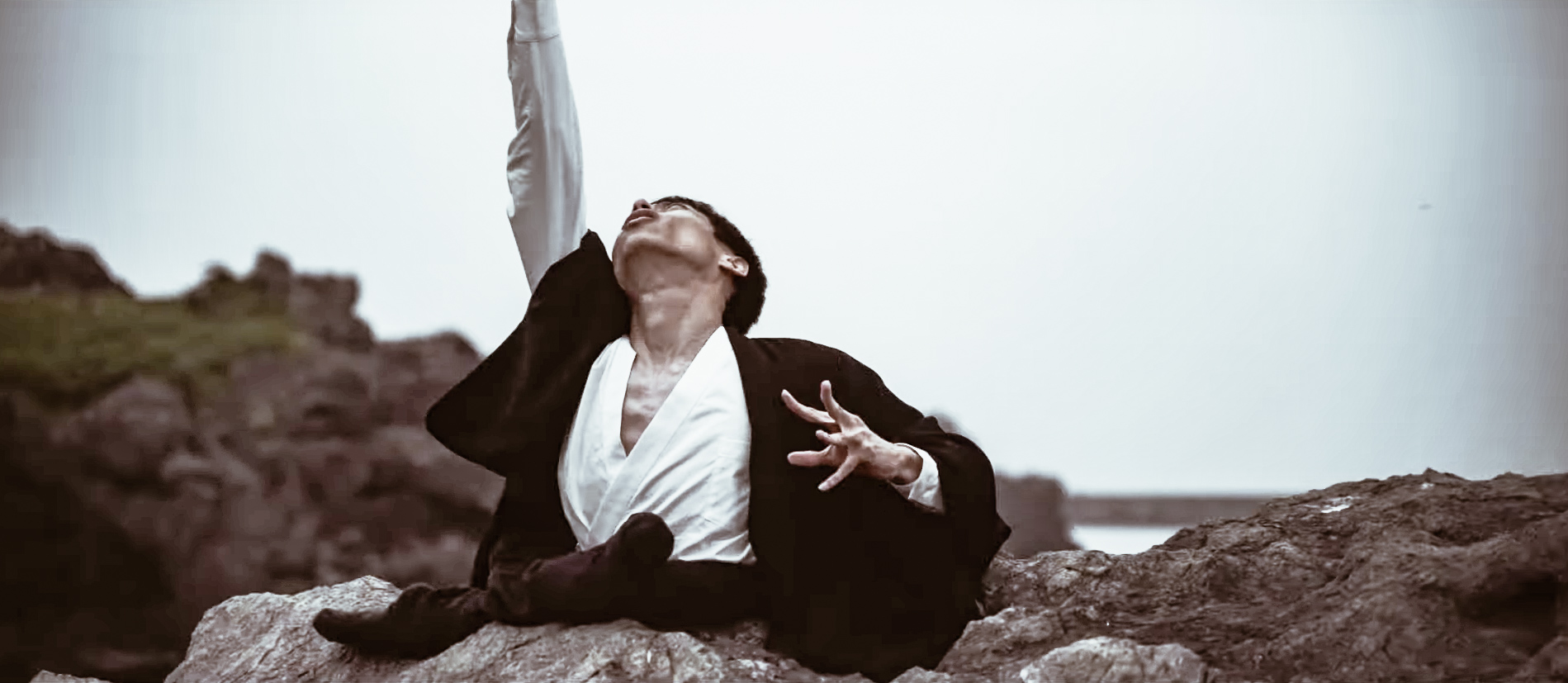
JIB: After having completed this shoot, what do you think of the experience?
K: After watching the video, you’d probably understand that it was quite hard work (lol). Especially because it was raining heavily that day. But the footage turned out as it did because of that, and thinking about it now, it was fun and this is something that was only possible because of that downpour. It was tough, but that made it fun as well.
A: Every time I’m about film something, I’m always very nervous. Because of that, I’ve felt quite a bit of pressure from the get-go. Rather than creating something from scratch, this time, I had Mr. Kambara’s dance in my head, which he had shown me numerous times, and had already picked a song that would be best suited for it. I spent days cooped up at home, listening to several hundred songs to decide on that.
I definitely also had the sense that “I can’t deliver something disappointing!”. Even on the day of the shoot, I kept watching the filmed footage and thinking, “How can I make this better?”.
In the past, when I’ve done shoots with Mr. Kambara, he has never said to me “I can’t do that” when I asked anything of him, so I ended up having more and more requests, like “I’d like you to do that”, or “I’d like a bit more from you”. But, in the end, I guess that’s because Mr. Kambara fulfills them for me (lol). The weather wasn’t great either, but I feel that we were able to create something wonderful.
JIB: What are your future plans? Will we be seeing you collaborate together again in the future?
K: Going forward, I want to continue taking on the challenge of more interesting projects too. In terms of specific goals, I hope to perform at the opening or closing ceremony of the 2020 Tokyo Olympic and Paralympic Games.
Especially so for the Olympic Games. There are no events in the Olympic Games that wheelchair-bound athletes can participate in, but we can still take part in the ceremony, so there’s that.
Instead of limiting myself with the idea that “I can only participate in the Paralympics because I’m wheelchair-bound”, I’m setting my sights on the Olympics to dance on that stage and create more interest in the Paralympic by doing so. I think this makes it all that much more meaningful.
And to shoot something with this team again… Of course, I’d want to. I want to, but when asking myself, “Will you be able to deliver something that tops this?”, I can’t say with a hundred percent certainty nor confidence that I will be able to come up with an even better choreography than this time’s. In other words, I am satisfied with this video. I feel that we’ve made something that’s way better than I could’ve ever imagined.
A: When you film a video, you can follow your own rules, but when I’m creating something, I want to make people feel that “rules don’t matter”. And that’s why, for this project, I decided to put aside everything that I had always and ever done to steadily create something new with a fresh mindset and without being bound by rules or methods.
To me, I do feel that we really did produce something great for this promotional video (PV), but of course, while doing this, I’m still hoping that I’ll create that’s even better for my next work and I’ll work towards achieving something better in the future, so with those thoughts in mind, I believe that I’ll certainly be able to create something amazing for my next production.
Rather than saying exactly when the second phase will take place or what it will be, I think that I would be better if I can feel and look at Mr. Sato’s and Mr. Kambara’s emotions at that time with a fresh perspective and then bring it to life in a video.
JIB: For our blog, please tell us what you think of the relationship between Japan and Italy.
K: My impression is that the relationship between Italy and Japan isn’t distant, but neither are the two countries very close. But Japanese people love Italian cuisine. Of course, I love Italian cuisine too. I’ve never been to Italy, but I want to visit someday. And, if possible, I want to dance there too!
A: The impression that I have of Italy is that it is cool. Be it with fashion or food, or cars and so on. Japanese receive good influences from them.
On a personal note, I have experience of working with an Italian company president. He was very unique and smart and kind. He had a friendly image, and I have even gone to Italy when he invited me to his wedding. Compared to a Japanese wedding, it was much more informal and had an enjoyable atmosphere.
I got to see all kinds of wedding celebrations when carrying out bridal photoshoots, and because of that, wedding ceremonies are have left a deep impression on my mind.
I originally wanted to be positively influenced by Italian style and I think that there aren’t many Japanese like me who have received such wonderful influences from Italians.
Through these, I’ve personally received a lot of positive influence from Italy, but I still really don’t know what kind of positive influence Japanese people can leave on Italy, so I think that going forward, it would be great if I, as a videographer and as someone who conveys information, can deliver Japan’s good points to Italy. This time’s video can also be considered as one of those. I think it would be great if we were able to convey the aura of the Japanese Samurai through Mr. Kenta Kambara’s dance, which resembles the wielding of a sword in battle, and through the jacket that he wears, which was inspired by Japanese traditional Kimono.
JIB: Lastly, please leave a message for our readers.
K: I’m very excited about having Italians watch our video. I’d be happy if you feel something being conveyed to you because it will be through dance instead of a language.
A: I’m very glad that the video that we made will be seen by lots of people within the country and from abroad as well!
Talk about the next project has also sprung up within the team, so I’ll take this opportunity to say that we hope that you’ll keep an eye out for our upcoming activities. We’ll continue creating amazing productions, so please do look forward to it.


And that was our intimate interview with Kenta Kambara and Nobuyuki Arai! Having read it, how do you feel? What do you think? Do share your comments with us on our Facebook page!
Also, before you go, do know that the Samurai Mode Jacket mentioned in the interview is now available in their online store alongside their newly released Samurai Mode Shirt! They do also offer gorgeous vintage Kimono and Haori in their store, so do make sure you check it out! You never know what you may find!
- Contact -
E-mail: support@ku-den.jp
- Links -
Website: https://ku-den.jp/
Facebook: https://www.facebook.com/kudenjp/
Instagram: KUDEN by TAKAHIRO SATO
Japan Italy Bridge interviews: KUDEN - Part 2
Here we are again with the second part of our interview with Takahiro Sato, CEO of Gerbera design Inc. and KUDEN. If you haven't read the first part yet, click here to read it! Without further ado, let's move on into the rest of what Takahiro Sato shared with us.

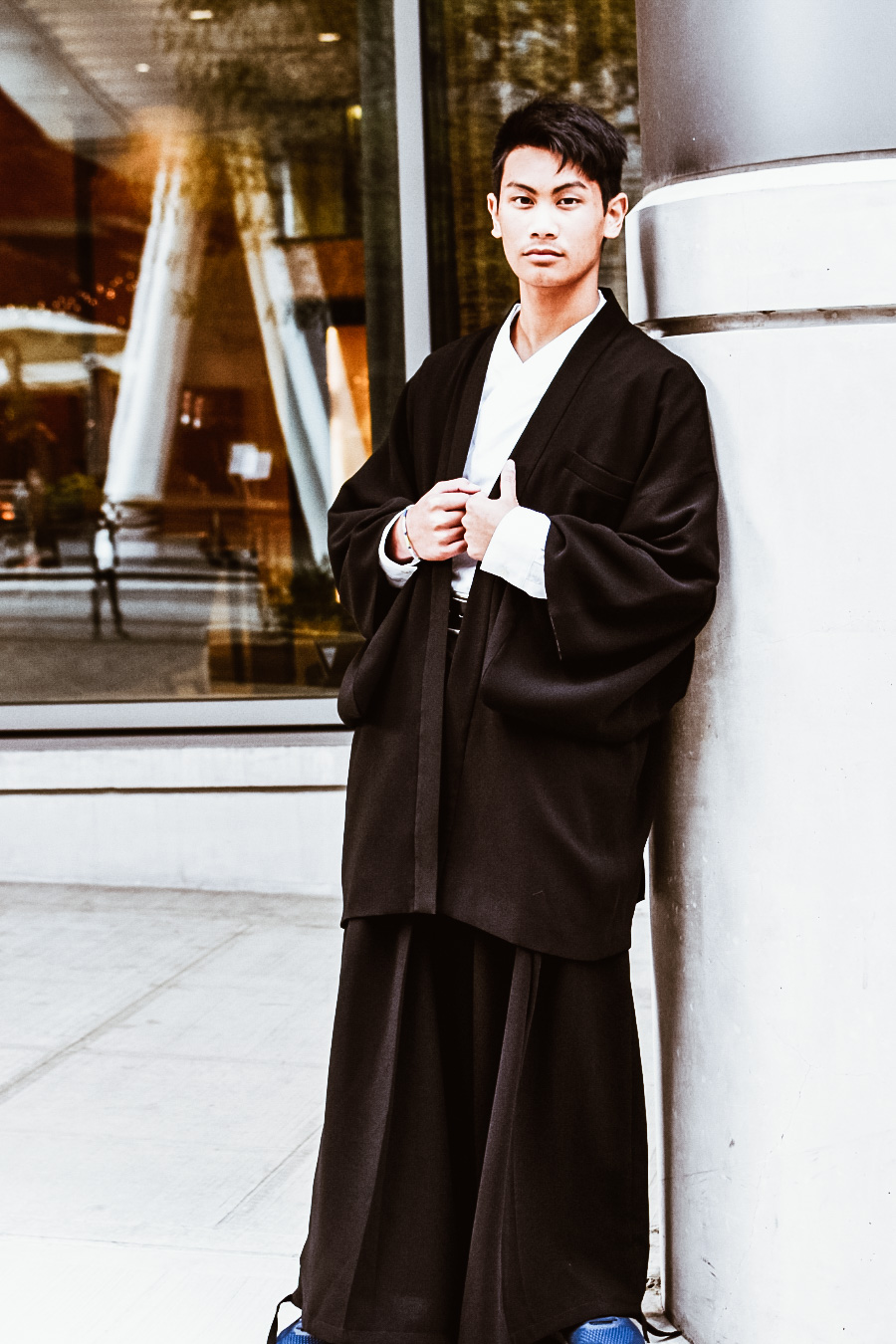
ーー I believe that there are difficulties to overcome when it comes to growing a global presence. Can you tell us about them?
I feel that expanding the business while overcoming different cultures, customs, and interpretations is a very difficult challenge. During these few years, I’ve come to realise that there are 3 main points while I’ve been trying out different methods to actually expand my business overseas. These are what I focus on while working on my business:
1. A shared vision based on universal values
I think that what’s important to achieve international success in this era of information overload is to come out with a vision that is based on the brand’s world view, values, and its reason for being. This is vital for the brand to turn customers who share its values into its fans.
What’s crucial in this is to focus on ‘universal values’ which transcend differences that countries and cultures may have between each other. I feel that this is no longer an era where we should aim to become a big business that mass produces and aims to be loved by the masses. I believe that what’s essential to expanding my business overseas is to be something that will be loved by people who shares our values for a long time in the years to come.
2. Transparency
I think that consumers these days seek transparency. I’ve had long years of experience in the advertising and design for a games and toys maker, and I’ve felt the change in the role of advertising and design that came with the change in consumers.
To me, the original purpose of advertising and design was to be a ‘means of communication’ that informs consumers about the essence of target thing or service but in this era of high economic growth, consumption itself is king. In these past few years, the trend for advertising is to create what is considered as good, consumable advertising with fanciful packaging that has to be further emphasised with words and visuals on top of the original goods or services. However, I think it can be said that this has already become a dated way of thinking.
Is the price appropriate? Is the quality as advertised? Is this something I need? Is the way the product is presented or provided true? I believe that questions like these are what consumers in this era ask and this is what they have come to value and consider as important.
3. Providing an experience
This is an era when all information is readily available on the internet. It can be said that people living in this modern era are constantly showered with information which they get almost immediately, be rich content from videos and photos, or simulations in VR and AR. Simply coming into contact with a large amount of information can make a person feel as if they know everything, but that doesn’t satisfy a person’s innate desire to be emotionally moved by things.
There is a phrase in Zen ideology that says “spiritual enlightenment only comes through personal experience”. Here, I would like to quote Takuan Sōhō, a major figure in the Rinzai school of Zen Buddhism who was featured in the manga Vagabond, written and illustrated by Takehiko Inoue who is best known for the manga series Slam Dunk.
Takuan Sōhō spoke of the importance of personal experiences metaphorically, saying, “You won’t actually become wet even if you explain what water is, neither will you actually turn hot even if you explain what fire is. It is the same as being unable to properly understand what they are unless you touch real water or actual fire. It is the same as how talking about food will not make hunger go away”.
“Seeking experience is fundamental of humans”
Already, there is a trend where people are seeking real experiences. I feel that aside from information, people have begun to seek value and consumption of ‘experiences’. Going forward, I expect that things will be further bi-polarised and the affluent will increasingly seek not virtual reality but instead real life experiences, and it is with this desire in mind that I started my business.
All in all, these are the 3 points that I consider while growing our global presence.
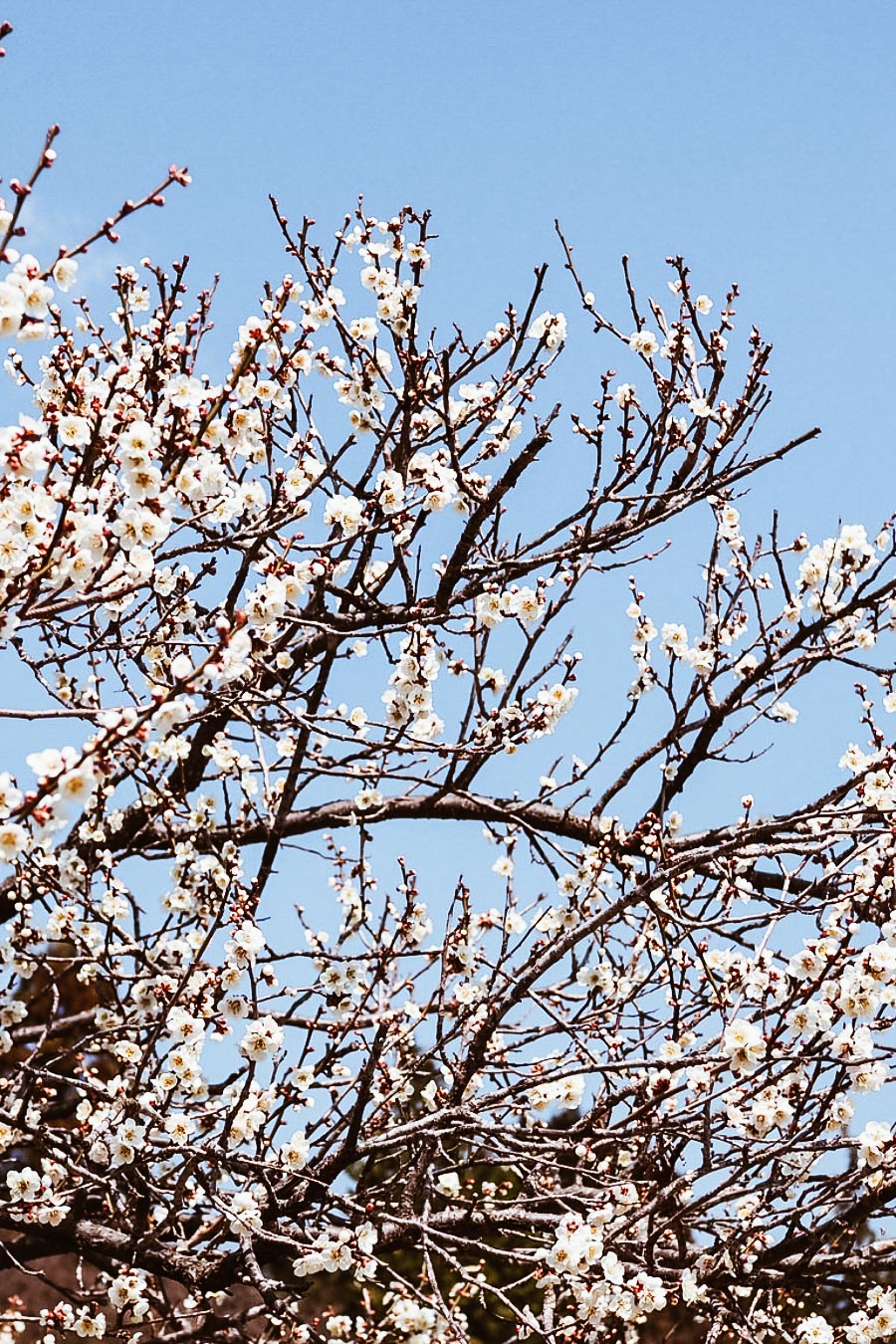

ーー Do you personally think that Japan is attractive to Westerners?
I can’t give a sweeping statement, but in my opinion, it is a ‘yes’. It can be said that Japan is a country that Westerners who have an interest in or are in the profession of food, architecture, traditional crafts, and arts would want to visit at least once in their lives.
Nikko, the place where I was born is also one of the bases of KUDEN, is a place with numerous local shrines being recognised as World Heritage Sites and three of our most significant buildings are Futarasan Shrine, Toshogu Shrine, and Rinnoji Temple. With a large land area of 51 hectares in assets and an additional 373 hectares of Buffer Zone. Nikko is a place where people’s faith comes together with the majesty of nature.
On Mt. Futarasan (Mt. Nantaisan) is Futarasan Shrine which was built to worship the various mountain gods, while Mt. Nikko Rinnoji Temple is a place that has more than 1200 years of history, and Nikko Tosho-gu Shrine itself is a magnificent masterpiece built by genius artists and architects of 17th century Edo.
Chuzenji Lake in Okunikko is a place where many embassy villas and houses belonging to different countries are located. People used to often gather in Nikko in the past for summits and yacht races, and it could be said that the nature of this locality has always been ‘international’. Even now, the Italian Embassy House Memorial Park, a wonderful building that symbolises the fusion of Italy and Japan, still remains. Perhaps one day, I’ll hold a KUDEN fashion show there.



Speaking of craftsmanship, when I first established KUDEN, I teamed up with artisans who are skilled in ‘Kumiko’, a technique used to create intricate, wooden, functional artwork, to design a project called ‘KUMIKO Laptop Board’. This was KUDEN’s very first product, but because it was something that had to be hand made, one by one, by elderly craftsmen, it was very time consuming to make and cost a lot to produce, resulting in it not selling well. However, this project resulted in me getting interviewed by various media outlets and even gaining attention on Reddit where people thought that the Japanese craftsmen’s handiwork was so fine and elaborate that it could have only been done with a laser cutter. They couldn’t believe that it was all made by hand. This led me to believe that if someone likes architecture and craftsmanship, they are also bound to be interested in this country called Japan.
I also believe that there are a lot of people who are familiar with Japanese games and animation. One other base of KUDEN’s is Tokyo’s Kichijoji. Here, the Ghibli Museum is located near to Inokashira Park. As someone who once created games and was in charge of game advertising in a game-making company, this is something that I feel deeply about. I do hope that people will come to Japan and get a taste of Japanese games, manga, animation, and other areas of local pop culture for themselves.
Another one of Japan’s charms is the rich variety of “food”. The skills exhibited by Japanese chefs with their sushi, tempura, and other cooking skills, along with the craftsmen who support them with the forging of cooking utensils for them like knives, are not to be missed. The people are kind. But I guess most of them can only speak Japanese. Despite that, I believe that if you muster up the courage to try and communicate with them, you’ll come to find that there are a lot of kind people around you.
Japan’s nature changes its expression from season to season. I do hope that you will try to visit us at least once.
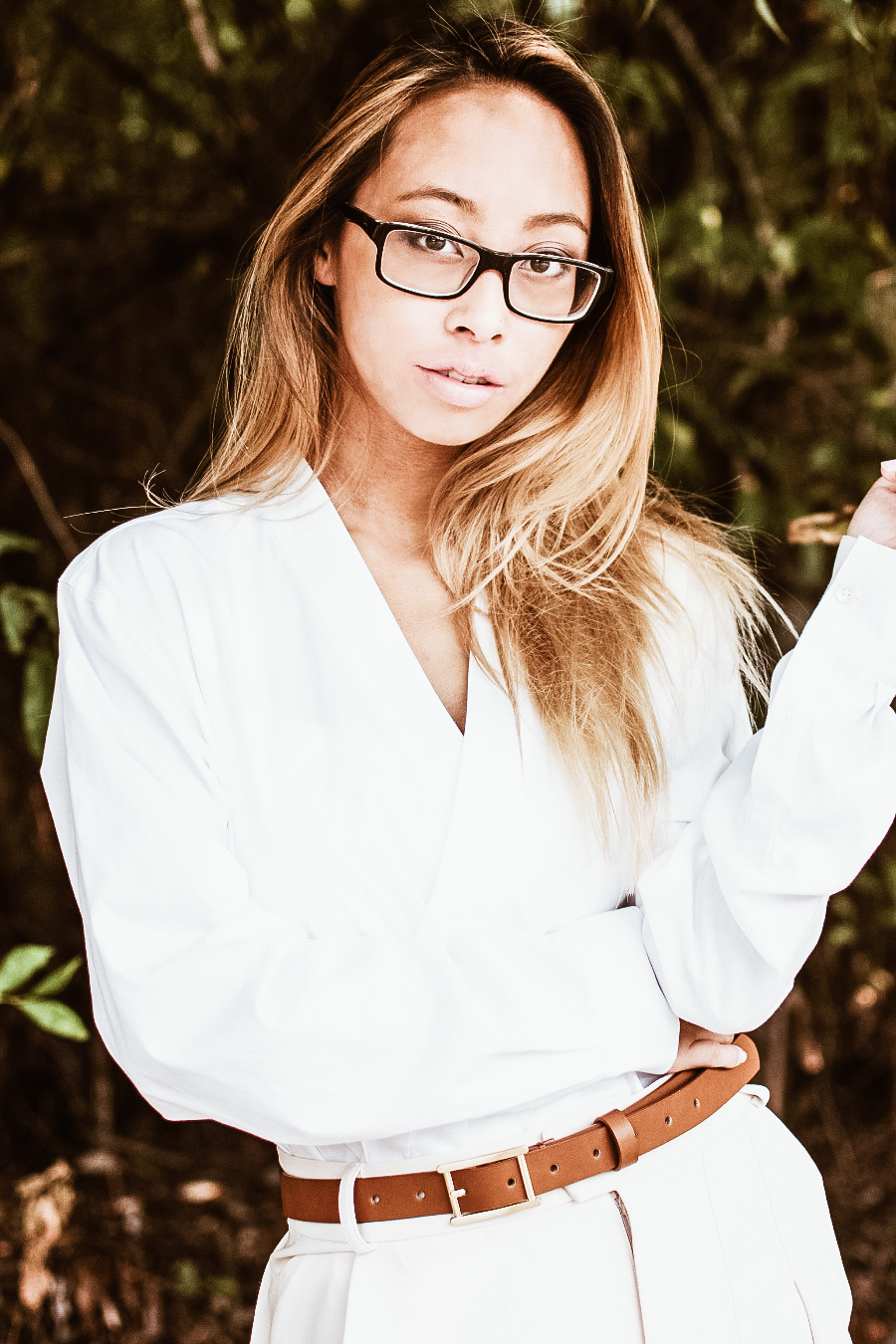

ーー On the other hand, what do you think of Italy as a market?
Both Italy and Japan are countries who each have strong national brands. Japanese do have a preference for things “Made in Italy” too because the impression that we have of Italy is that things with such a label are those that are of as high quality as those labelled with “Made in Japan”. Personally, I feel that Italy and Japan actually have a lot in common. The people of both countries value craftsmanship, and love food and arts as well.
There was a period of time when I was unable to consider or call myself a 'designer', and during that time, I borrowed the word 'progettista' from Italian and gave myself that title. The Italian way of making things has always been one that felt appropriate to me.
I am presently designing leather sandals under the motif of Japanese style, and I could not be happier if I would be able to use ‘Made in Italy’ leather for this. I have a dream of one day opening up KUDEN haute couture boutique in Milan and have customers make clothes out of fabrics that they pick out. I would be truly honoured more and more people in fashionable Italy wore my clothes.
ーー Going back to KUDEN, what are your future plans and goals?
KUDEN aims to become a project that ties the employment of people with disabilities with artisan professions, like those in garment production or woodworking, through an “Apparel Brand + Employment of The Disabled” model. The final composition of the company will include the following components: KUDEN Apparel Brand, design office, garment and woodwork production, distribution hub to overseas, and company dormitory where people with disabilities can live in. To reach this future goal of ours, I am now focused on expanding KUDEN by TAKAHIRO SATO overseas.
My beloved son is the reason why I am to be “a manager that highly values people”. As mentioned before, I have once ended up neglecting my health by working too hard and as a result folded my company. I was a no-good businessman who caused trouble for my staff and my customers and ended up being separated from my beloved family back then. Despite all of that, to support my son’s future, I restarted my journey as an entrepreneur and now I also continue on for the sake of the staff of Gerbera Design who lent me the strength to hold on to this dream.
As someone who has had such an experience, there are a few things that I keep in mind as I take on this challenge again.
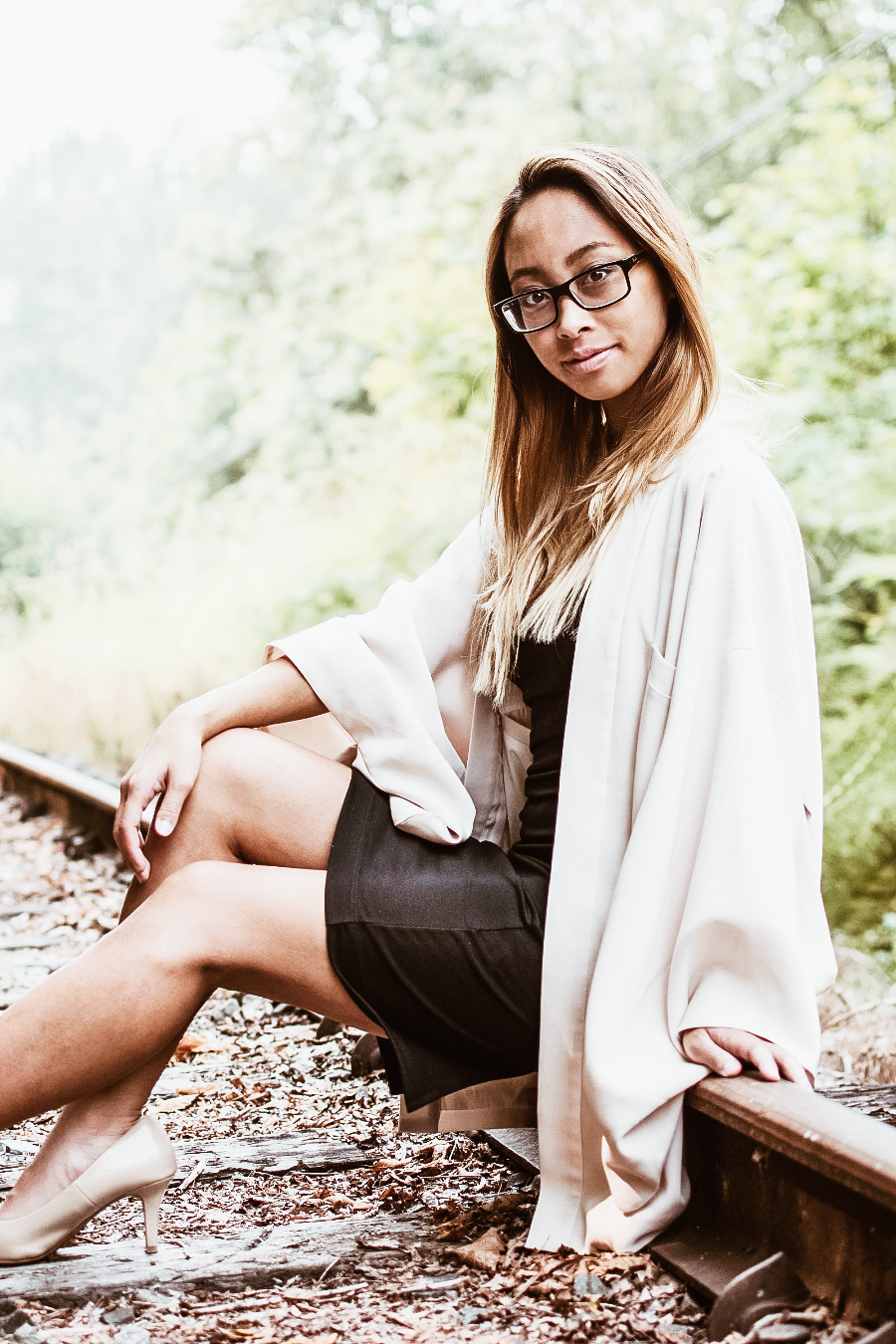

The first point is the creation of an operating foundation that doesn’t rely on things like grants or handouts. The second point is to create a foundation that will not be influenced by the economies of the foreign currencies that we trade in.
These two points are measures that will aid enhance the going concern of the company. These came to mind because when I was with the major toy-making company, there was a time when I was involved with the employment of people with disabilities there, and I’ve gone through the painful experience of closing offices and dismissing people because of company policy changes. At the same time, considering Japan’s declining population numbers and the recessive economy, relying on Japan’s tax money and the domestic economy to run a business will probably bankrupt it too.
The third point is the desire to nurture not only disabled persons but also youths who wish to support them and such endeavours.
This is largely out of my personal ego. I cannot raise my adorable son with him close to me, but I dream of being able to work together with him in future. My son, Takeru is only 8. Even if I pass away, his life will go on. I do all this to minimise the possibility of the company collapsing or its direction changing after I pass, as my son can only receive support from someone or the country. As such, while I am still around, I’ll foot taxes for him and help the younger generation, and then entrust them with things after I am gone.
The fourth point is the desire to increase the number of work options for the disabled as much as possible so that they can do what they enjoy doing.
During my involvement in recruiting disabled persons, I had the opportunity to observe things and saw them baking bread, folding clothes in the backyard, cleaning up, and so on. I came to realise that there is work that they can do, and now, instead of having my son and other children like him only think about how cool designers, programmers, craftsmen, and other professionals are, I want to let them cherish their aspirations and give them the chance to be in any profession they want.
From primary industries like forestry and agriculture, craftsmanship and design, and finally to overseas sales. We are small, but we are in the midst of building a well-rounded business. In terms of craftsmanship, we have already introduced the employment of disabled persons to my friends who are artisans who are experiencing a lack of successors. KUDEN is expanding overseas to support this and I intend to persevere and spend the rest of my life working to create a place where my son and other children like him can work with joy.
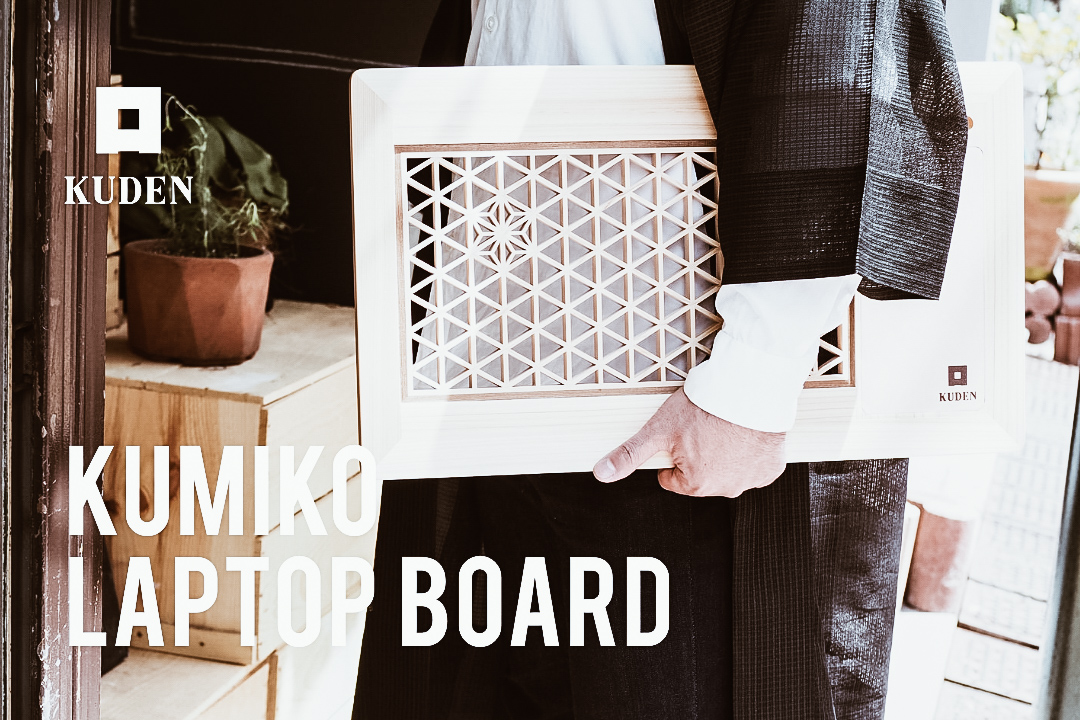
ーー We do hope that you will be able to fulfil your dreams and achieve your goals too. Lastly, please leave a comment for our readers.
KUDEN has a dream. In the pursuit of the happiness of our staff, our customers, and our stakeholders, we continue to work on creating jobs by connecting disabled persons with craftsmen through design. We bring designs that can be loved for more than 10 years into the world to change it, and we work hard towards becoming a brand that will be loved for a hundred years. All the effort that we have put in resulted in our first line of clothes which we want modern day Samurai to wear.
To me, “wearing” clothes is like putting on a second skin to me. Clothes symbolise the era in which its wearer lives in and they are like an expression of a person “wearing” their values, desires, and hopes for the future.
In this era that we live in, things come and go very quickly. In my daily struggles as a businessman and a designer and a father as well, there are times when I succumb under the workload and the pressure and start to feel disheartened. There are also times when I lose sight of my path and my values too. Doesn’t everyone feel that way sometimes?
In such moments, wearing these clothes, we’ll straighten our backs and harbouring the spirit of the Samurai with dignified appearances, rise up motivated with the resolution to keep the faith and follow through with all our hearts. I wanted these clothes to be outfits that can express this version of you and me to the people around us, and thus I named them ‘Samurai’.
Be it in Japanese animation, manga, or historical films, I’m sure that everyone has seen them at least once before; Samurai who live life by staying firm to their convictions.
“I am just a strong, kind, and resolute Samurai. A modern-day Samurai.”
You will become a modern-day Samurai.
We present to you the Samurai Mode Jacket, a piece of clothing that expresses your self like a second skin, that can be worn casually on normal days or for formal occasions and even in important business settings. This was designed with the hope that it will be clothing that is desirable to people of all ages, genders, and nationalities around the world who want to live by standing fast to their values and beliefs, who are working hard for their loved ones in this busy, fast-paced world. I believe that when you wear it, you will be able to feel the power in the design of these clothes.
Going forward, I intend to continue designing and producing clothes that bring joy to everyone with this conviction. We may be a small brand, but I will keep fighting with the Samurai spirit.
And that was our intimate interview with CEO Takahiro Sato! Having read it, how do you feel? What do you think? Do share your comments with us on our Facebook page!
Also, before you go, do know that the Samurai Mode Jacket mentioned in the interview is now available in their online store alongside their newly released Samurai Mode Shirt! They do also offer gorgeous vintage Kimono and Haori in their store, so do make sure you check it out! You never know what you may find!
- Contact -
E-mail: support@ku-den.jp
- Links -
Website: https://ku-den.jp/
Facebook: https://www.facebook.com/kudenjp/
Instagram: KUDEN by TAKAHIRO SATO | haoru by KUDEN
Japan Italy Bridge interviews: KUDEN - Part 1
We are pleased to kick-off our initiative, “Japan Italy Bridge interviews”, which introduces one-of-a-kind Japanese companies to the world, with a special interview with the CEO of Gerbera Design Inc., Takahiro Sato.
Gerbera Design Inc. is the company behind the fashion brand KUDEN by TAKAHIRO SATO which ran the massively successful Kickstarter campaign for their Samurai Mode Jacket. The campaign was so successful that it was funded more than 1000% of its original goal, and has garnered much attention from various media outlets all over the world. On this occasion, we have been given the opportunity to speak to the man behind this runaway success to find out more about his story, the future of his brand, and his thoughts about Japan and Italy.

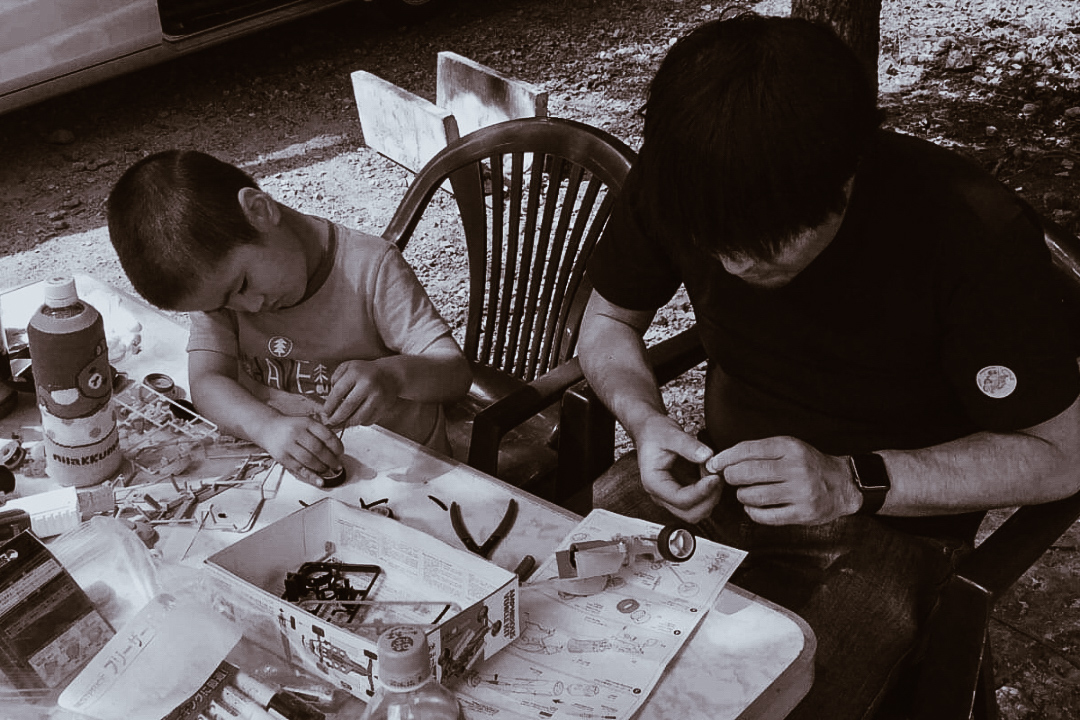
ーー To start, please introduce yourself and your company.
Hello. I’m Takahiro Sato, the designer of KUDEN by TAKAHIRO SATO (below, KUDEN) and the CEO of Gerbera Design Inc. (below, Gerbera Design). You may call me Tak.
Utilising the experience that I have gained through the loss of a previous business and my years of running a business in the entertainment industry dabbling in games and toys, I started up Gerbera Design, a company that provides consultancy services to new businesses while also producing creative works as part of our operations.
With the hope that I can create a place where I can work together with my son, who has autism and mild intellectual disability, in future, I launched the apparel brand, KUDEN, under Gerbera Design as a new business with to reach out to an international market.
ーー What drove you to start this business?
The beginning of my business endeavours was the first time I started a business in 2007. It was a design company that I established as a proprietor. At the time, it was found that both my parents had cancer and since I had to take care of them, I, who was working at a large corporate group in the business of toy and game-making, quit my job and began my journey as an entrepreneur.
Despite the hard work that I put into the design company that I ran, the company collapsed and the business folded. Back then, I was a terrible businessman who caused problems for my staff and customers and even ended up living apart from the family I love.
What convinced me, a person who has met with such a big failure, to try again as a businessman was the resolution to create a place where I can, in future, work together with my son who has autism and mild intellectual disability, who I’m now separated from. However, I feel that Gerbera Design’s present operations in management consultancy and the creative business are not activities that are suitable for people with disabilities to be employed in. And so, I continue to look for new business avenues.
During my search for a new business, I began to think about what the future desires and what I can do as a designer to fulfil that. As a designer, I cherish the things I use and I take good care of them. I personally love long-life designs, and when I thought of wanting to start a business that brings such designs into the world, I found the kimono that belonged to my late mother. Looking at it, I was inspired and felt that it would be interesting to reestablish and redefine the modern kimono, to design something that would make people feel “I want to wear it”. This is the spark that brought the Samurai Mode Series to life. These clothes were then marketed to the world under the brand KUDEN by TAKAHIRO SATO.
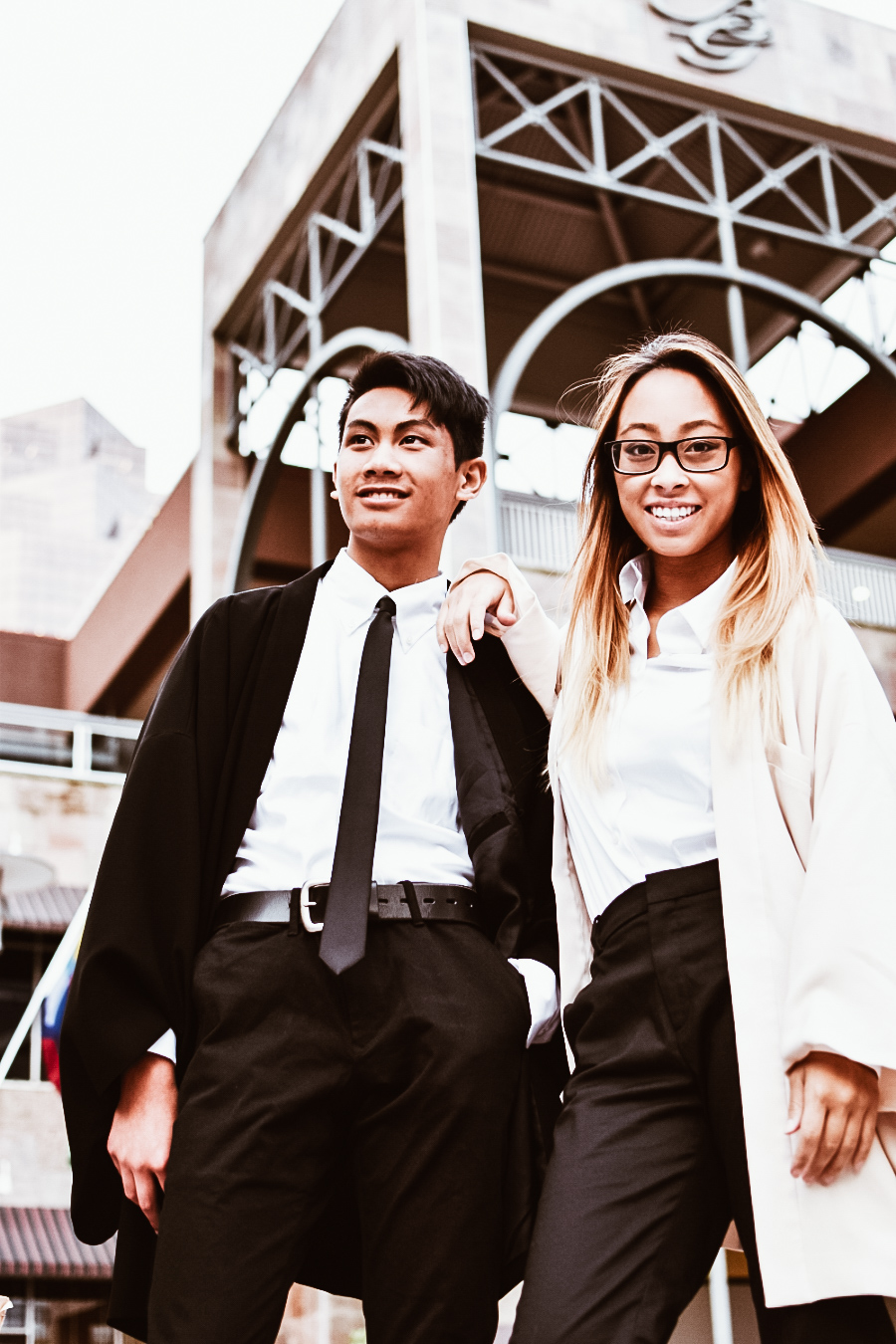
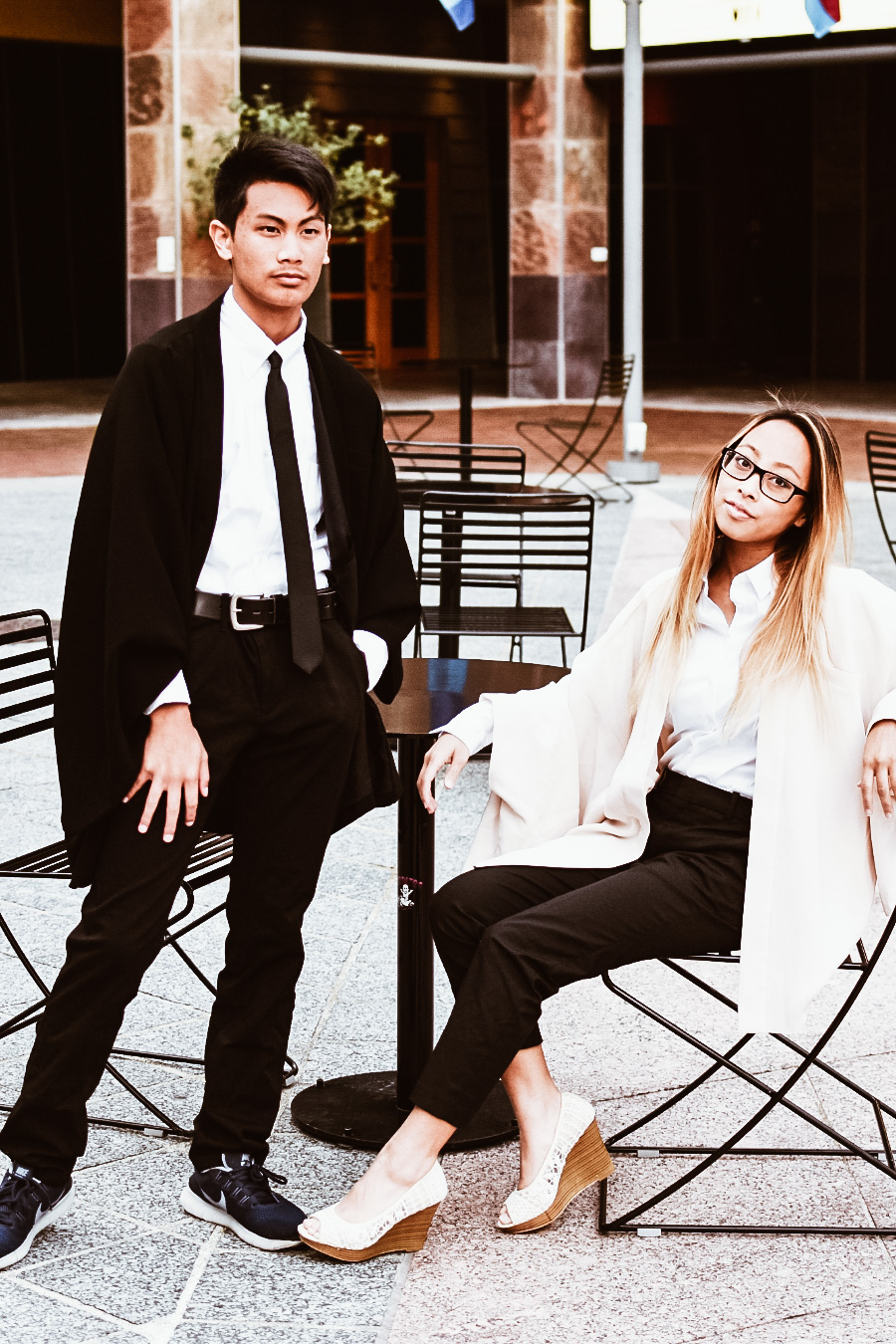
The reason why I expanded the brand with the international market as our main target is that I wished to create a place where my disabled son can work with me, and thus strategized to establish a company where disabled persons can work and be employed in.
Considering that Japan’s has problems like its declining birth rate and ailing economy, I doubt that support for handicapped people like my son become better going forward. Even for able-bodied persons like me, difficulties are on the horizon as there is talk that the government will not be able to undertake our pension and social security.
With all of that in mind, I cannot only focus on the local market and thus have to make the company profitable with an overseas customer base. Otherwise, even the younger generation employees who we employ will have to eventually be let go. To prevent this from happening, I established this business right from the beginning, from its start-up phase, with a focus on the global market.
I still have a long way to go, but as this is the one promise that I have made to my son, I will definitely fulfil it before my time is up.
ーー What do you pay particular attention to in running this business?
As someone who has folded a business once, the one conviction that I keep in mind as I try again as an entrepreneur is to be “a manager that highly values people”; be it my staff, my customers, or my partners and associates. This is an ongoing effort that pursues the happiness of my stakeholders and puts the long-term continuity of the business first instead of focusing on short-term results or gains. This, in addition, demonstrates my resolve and strong will to bring happiness to socially disadvantaged people, like disabled persons and the elderly, through employment and trade.
The reason behind these beliefs of mine is the bitter experiences that I’ve had. Long working hours has become a social problem in present-day Japan and I, too, have experienced overworking myself to the point of collapse and losing my company. I’ve also experienced the reality of my ex-wife divorcing me because of the tough times I’ve put her through, thus having to live separate from my son but I should not have let things happen like this. Even though I was working for the sake of my family and my employees, I ended up losing everything. The regret weighs heavy on me. I do not wish for my staff nor my customers to experience the pains of destroying their health and losing their family by overworking. Based on these feelings and my experience with my previous company, I corrected things and applied new methods of working and operating.
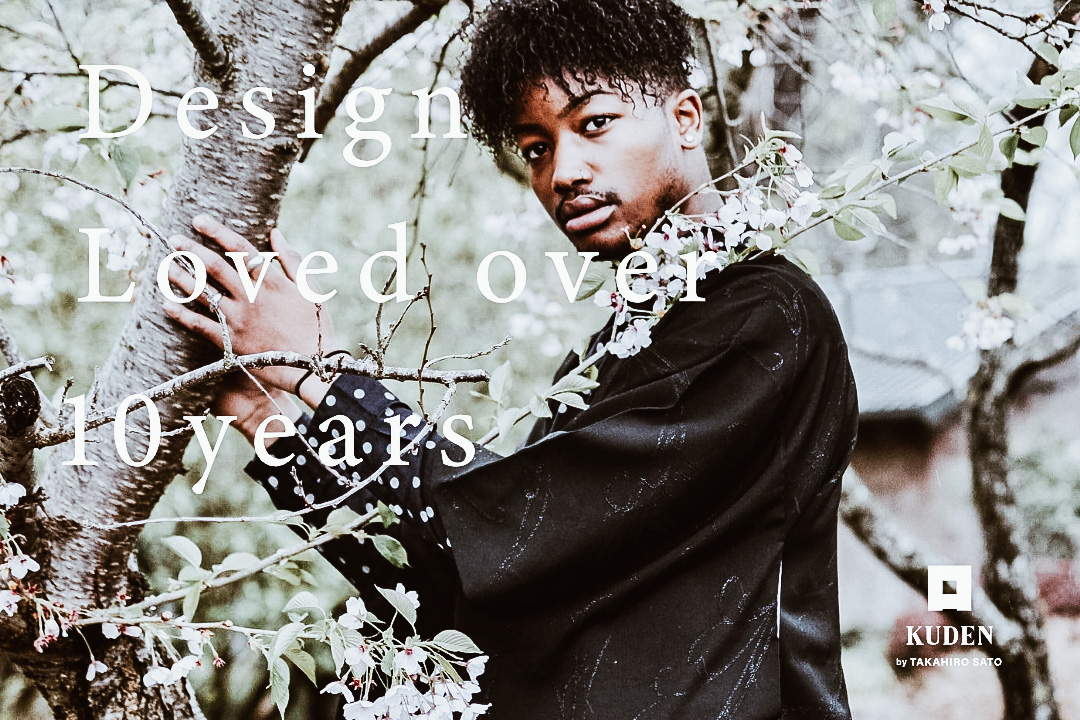
My company operates on a 4-day work week which allows for 3 continuous days of rest in a week if we can complete our work. Using these rest days, there are staff in my company who are fathers who, for the first time, can find time to spend with their children. There are also others who can visit Disneyland with their partners every Friday, who take lessons during weekends to work towards their dream of becoming a voice actor, and there are those who, like me, live apart from their disabled children, who can fulfil the needs of their children as and when needed. I want them to do more than just work. I want them to live and experience life too. I am still exploring methods of operating and earning that will make these goals a reality through trial and error. Contract jobs are widespread in design companies, and realising these goals of mine will reduce such positions in my company, at the same time converting my business model into one that provides both management consultancy services and creative production.
When I fell ill after my previous company closed down, I thought about a lot of things while lying in that hospital bed. I realised that most of our sales were generated by a few customers who made up the top percentage of our clientele. It was then that I decided that I would only go through the trouble to please the customers who appreciate our work and are happy to pay for it, thus changing the focus of how I work and making this possible. Basically, methods of earning that have exceptional methods of working have to evolve with the times. Otherwise, we won’t be able to rectify issues, like long working hours, which become pain points. We’re taking small steps, but I’ll continue to work with my staff to look for methods that work.
The next step is to be “a manager that highly values people”, and in expanding my new business, KUDEN, I have first started with the garment factory to connect craftsmen with the employment of disabled persons, and taken on the challenge of pushing forward the business as one that cherishes all the stakeholders involved. Others may laugh at me and call me naive, but I am committed to this.
<Reference materials>
The operational improvement of Gerbera Design Inc. (formerly, Sato Creative Design Office Gerbera) was featured on the front page of The Tokyo Shimbun's morning edition in December of 2016 as a part of author and work-style critic Yōhei Tsunemi’s book on business practices of small and medium enterprises, “なぜ、残業はなくならないのか(祥伝社新書)”.
【探訪 都の企業】
<働き方改革編>(上)出社週4回、8時間勤務 会社の稼ぎ方変える
Explore: Business in the city
<Work-style reform edition> Working 4 days a week, 8 hours a day: Changing how the company makes money
【なぜ、残業はなくならないのか(祥伝社新書) 】
Why Won’t Overtime Go Away? / Naze, Zangyō wa Nakunaranai no ka (Shōdensha Shinsho)
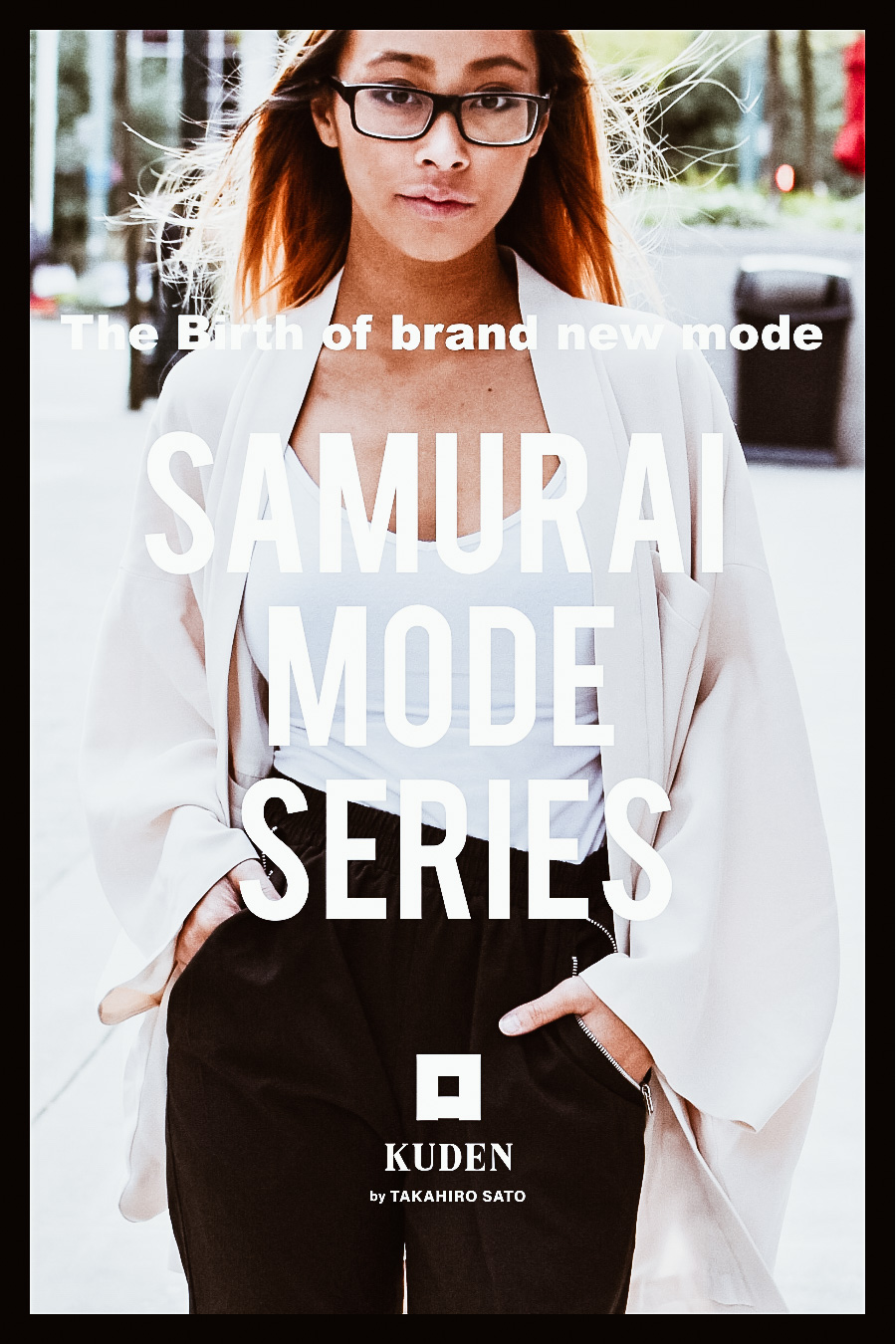
ーー How do you think the global market perceives KUDEN? Also, what kind of impression would you like the world to have of KUDEN?
I think that KUDEN doesn’t come across as a brand that is in the ‘fashion’ sphere to the global market. Instead, KUDEN is loved by people who feel that anime, manga, food, crafts, Zen ideology, arts, and other cultural aspects of Japan resonates with their own personal values.
While we’ve met with various difficulties during this time’s pre-order sale of Samurai Mode Jacket, my staff and I were deeply moved by the numerous messages that we’ve received from customers all over the world who told us how they were patiently waiting and looking forward to their jackets. They have encouraged me, saying that my desire to work hard for my son makes me a ‘samurai’ to them among other such heart-warming messages.
As a brand that doesn’t only cater to people who love clothes, the integrity and resolve that KUDEN possesses is what we call ‘being dignified’, and in English, we have named it as ‘thoughtful life’. I feel that this perspective that our brand has and the desire to connect the lack of craftsmen successors with the employment of disabled persons through design has allowed me to make kind and like-minded friends around the world who share my vision with me.
I want to step up my efforts and work harder so as to not betray the expectations of all these people who support these visions and perspectives of KUDEN.
And that was the first part of our intimate interview with CEO Takahiro Sato! Having read it, how do you feel? What do you think? Do share your comments with us on our Facebook page!
Also, before you go, do know that the Samurai Mode Jacket mentioned in the interview is now available in their online store alongside their newly released Samurai Mode Shirt! They do also offer gorgeous vintage Kimono and Haori in their store, so do make sure you check it out! You never know what you may find! Stay tuned for the rest of the interview and to read more about KUDEN's brand approach and future plans!
- Contact -
E-mail: support@ku-den.jp
- Related links -
Website: https://ku-den.jp/
Facebook: https://www.facebook.com/kudenjp/
Instagram: KUDEN by TAKAHIRO SATO | haoru by KUDEN







